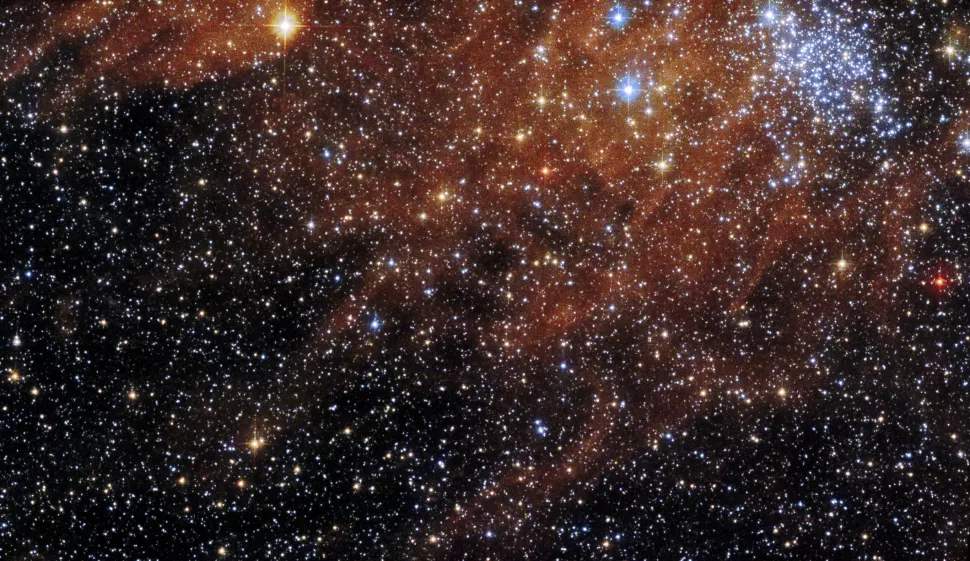The Hubble Space Telescope Observes a Shimmering Ocean of Stars Beyond Our Galaxy
Behold a fountain of star formation in the Large Magellanic Cloud, a dwarf satellite galaxy of the Milky Way.
Gaze upon a magnificent display of star formation in a neighboring galaxy.

Astronomers rely on the Hubble Space Telescope as a crucial instrument to study the properties of stars. One area of particular interest is the Large Magellanic Cloud (LMC), visible to observers in the Southern Hemisphere. Although the LMC appears as a vague smudge to the naked eye, it is in fact a satellite galaxy of our Milky Way. While Hubble can distinguish individual stars within the LMC due to its relative proximity to us, the vast distance between the two galaxies presents certain obstacles.
A new Hubble image showcases a star-rich region in the LMC. The upper right corner of the image depicts a sparkling expanse of stars from KMHK 1231, an open cluster where stars are loosely held together by gravitational forces. The reddish hue signifies a dust and gas nebula that may eventually give rise to new stars.
“[Open clusters] tend to form from the same cloud of gas and dust, so their stars share characteristics like age and chemical composition, providing excellent laboratories for studying how stars form and evolve,” according to a NASA image description published on Dec. 6, 2022.
Despite its proximity, studying the stars in the Large Magellanic Cloud (LMC) poses a challenge for astronomers due to the difficulty in measuring the amount of light emitted by the stars. To overcome this challenge, scientists are using the Hubble Space Telescope to examine how the intergalactic space between Earth and the LMC absorbs the intense light from these stars. The Hubble recently observed a cluster of stars, KMHK 1231, as part of a project aimed at determining the true nature and characteristics of objects in the satellite galaxy by analyzing the absorption of ultraviolet light by the intergalactic material. According to Hubble officials, this information is critical to accurately estimating the amount of light these objects emanate.
NASA states that open clusters like the one being studied offer a great opportunity for investigating the process of star formation and development. Therefore, the astronomers’ endeavors could provide fresh insights into this phenomenon. Additionally, while conducting scientific research, the Hubble Space Telescope produces visually stunning pictures that can be appreciated by everyone.
Do not forget to share your opinion with us to provide you with the best posts !




0 Comments